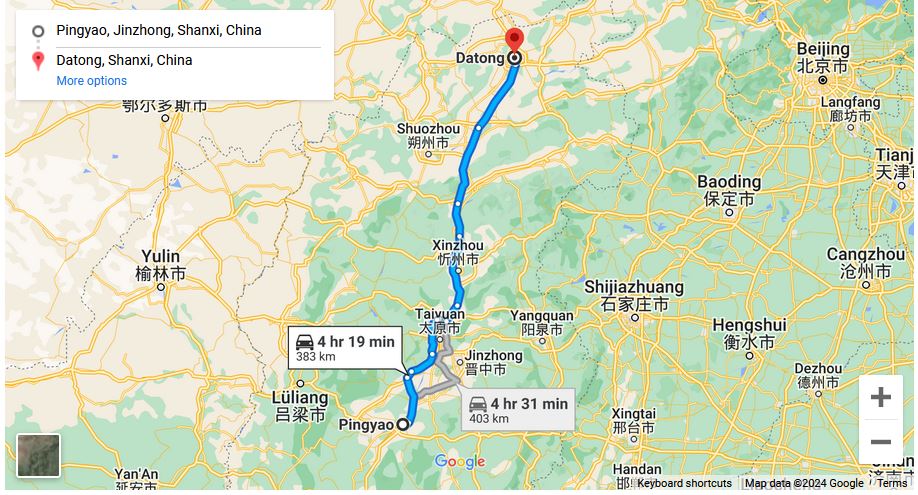The journey from Pingyao to Datong unveils a fascinating transition between two cities in Shanxi Province, each offering distinct glimpses into China’s historical and cultural narrative. As travelers traverse the landscapes, they move from the well-preserved medieval charm of Pingyao to the ancient city of Datong, where millennia-old structures stand as testament to the region’s rich heritage.
Leaving the cobblestone streets and ancient walls of Pingyao, the journey embarks on a road that winds through the vast plains of Shanxi Province. This rural expanse, characterized by terraced fields and traditional villages, provides a serene backdrop that contrasts with the bustling history of Pingyao. The journey through these landscapes offers a glimpse into the agricultural heartland of China, where rural life unfolds amidst the ancient rhythms of sowing and harvesting.
Datong, situated approximately 300 kilometers north of Pingyao, awaits as the next destination. Known as the “City of Coal” due to its significant role in the coal industry, Datong is perhaps more renowned for its historical treasures that transport visitors back in time. The city has weathered the winds of change, and its ancient structures bear witness to a legacy that predates the modern era.
The Yungang Grottoes, a UNESCO World Heritage site, is a highlight of any visit to Datong. Carved into the sandstone cliffs during the Northern Wei Dynasty, these grottoes house over 51,000 statues of Buddhas and divine beings, spanning a period of about 50 years. The intricate carvings and colossal statues, including a 17-meter tall Buddha, showcase the artistic and religious achievements of ancient Chinese Buddhists. The Yungang Grottoes stand as a testament to the region’s historical importance as a center of Buddhist art and culture.
In contrast to Pingyao’s medieval cityscape, Datong is home to the well-preserved city walls and towers of the Datong Nine-Dragon Screen. Erected during the Ming Dynasty, this screen is one of the oldest and largest glazed screens in China, adorned with vibrant depictions of dragons. The screen serves as a visual feast and a testament to the craftsmanship of ancient artisans.
The Hanging Monastery (Xuankong Si) is another iconic site in Datong that captivates visitors with its gravity-defying architecture. Suspended along a sheer cliff face, the monastery incorporates elements of Buddhism, Taoism, and Confucianism. The wooden structure seems to defy both architectural and gravitational norms, showcasing the ingenuity of ancient builders.
The Huayan Monastery, an ancient Buddhist temple dating back to the Liao Dynasty, offers a serene retreat within Datong. The temple, surrounded by tranquil gardens and adorned with exquisite sculptures and murals, serves as a reminder of Datong’s spiritual legacy.
As Datong undergoes modernization and economic development, the juxtaposition of ancient wonders against the backdrop of contemporary life becomes apparent. The city’s urban center is dotted with bustling markets, modern infrastructure, and a thriving local culture, creating a dynamic atmosphere where history coexists with the present.
In conclusion, the journey from Pingyao to Datong is more than a mere geographical transition; it is a voyage through the layers of China’s past. From the medieval streets of Pingyao to the ancient grottoes and temples of Datong, travelers witness the evolution of a region that has been integral to the cultural and religious mosaic of China. The narrative unfolds through the landscapes, monuments, and traditions, inviting those on this journey to immerse themselves in the rich historical tapestry of Shanxi Province.

